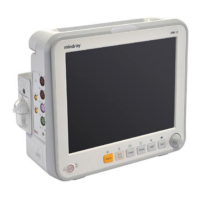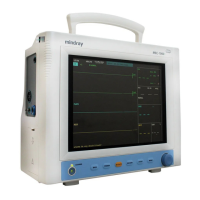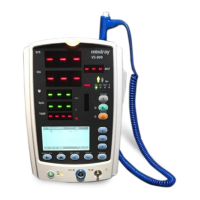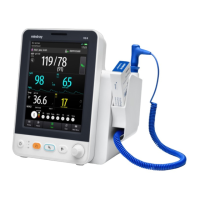7-10
7.7 Clearing Technical Alarms
For some technical alarms, their alarm lamp flashing and alarm tones are cleared and the
alarm messages change to prompt messages after the
hardkey is pressed. After the
patient monitor restores the normal alarm status, it can give alarm indications correctly in
case these alarms are triggered again.
For some technical alarms, all their alarm indications are cleared after the
hardkey is
pressed. After the patient monitor restores the normal alarm status, it can give alarm
indications correctly in case these alarms are triggered again.
For others, their alarm tones are cleared but the alarm lamp flashing and alarm messages
remain after the
hardkey is pressed. After the patient monitor restores the normal alarm
status, all the alarm indications will continue if the alarm conditions still present.
7.8 Testing Alarms
When the monitor starts up, a self-test will be performed automatically. The system gives a
beep indicating that the visible and audible alarm indicators are functioning correctly. In the
meantime, the alarm lamp turns yellow then red. The start-up screen is displayed.
For further testing of individual measurement alarms, perform the measurement on yourself
(for example SpO
2
or CO
2
) or using a simulator. Adjust alarm limits and check if alarms
behave correctly.
7.9 When an Alarm Occurs
When an alarm occurs, observe the following steps and take proper actions:
1. Check the patient’s condition.
2. Confirm the alarming parameter or alarm category.
3. Identify the source of the alarm.
4. Take proper action to eliminate the alarm condition.
5. Make sure the alarm condition is corrected.
For troubleshooting specific alarms, see appendix Alarm Messages.

